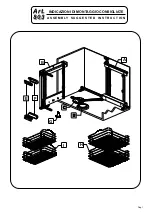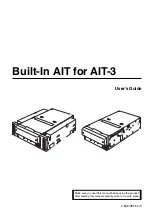
Model h7507 (Mfg. since 3/05)
-21-
Removing more than
1
⁄
16
" from the infeed
fence may greatly increase the risk of kick-
back injury when routing.
7. redrill and countersink holes in the new
infeed fence board, then secure it with the
fasteners removed in
Step 5.
8. place a straightedge against the outfeed
fence board, then adjust the fence assembly
so that the straightedge is also against the bit
flute, as illustrated in
figure 30.
HigV^\]iZY\Z
Dji[ZZY
;ZcXZ7dVgY
HigV^\]i
GdjiZg7^i
>c[ZZY
;ZcXZ7dVgY
IdeK^Zl
figure 30. Fence jointer setup (guard removed
for clarity.
9. lock the fence assembly in place, adjust the
router guard as needed and secure it, con-
nect the router to power, then perform the cut
(see
figure 31).
IdeK^Zl
8jii^c\9^gZXi^dc
figure 31. Edge jointing (guard removed for
clarity).
Always feed the workpiece against the rout-
er bit rotation direction, as illustrated below.
Otherwise, the workpiece could be aggres-
sively pulled from your hands, drawing
them into the spinning cutter.
7^i
GdiVi^dc
Ldg`e^ZXZ
— if the infeed fence board is already face
planed
1
⁄
16
" less than the outfeed fence
board, proceed to
Step 8.
6. Square up a second infeed fence board to the
same dimensions as the one you removed in
Step 5, then face plane off
1
⁄
16
". the amount
of material removed will determine the depth
of cut.










































